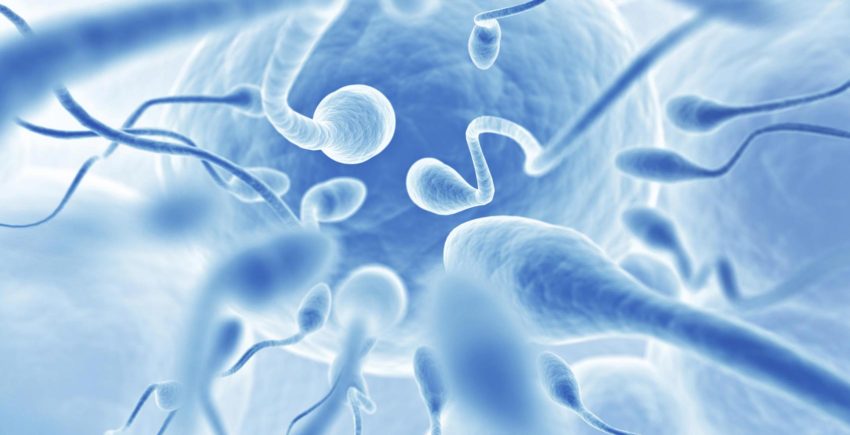
Sperm Mapping: is it right for me?
Sperm mapping, or Testes mapping, is a procedure where multiple fine needle biopsies (fine needle aspirations or FNA) are done on the testes so that we can see if there are any areas where sperm are produced. This test is useful because the testes are “heterogeneous” meaning that different areas of the testes have different patterns of sperm production. A majority of the areas of your testes may produce no sperm, yet there may be some harder-to-find areas that do. The importance of sperm mapping is it can tell us if there are sperm producing areas in the testes, and where they are.
On the contrary, if no sperm are found during this test, it’s assumed that there are no sperm being produced anywhere in the testes. No further evaluation is necessary and it saves the man from having to go through an open testicular biopsy and prevents the couple from undergoing a fruitless in vitro fertilization cycle.
Not located in New York? No Problem! The consultation and procedure is performed within two days, and results can be discussed over the phone. Contact us to arrange a free phone consultation or to schedule an appointment.
BACKGROUND AND TESTING
Men who have no sperm in the ejaculate can be divided into two broad categories:
Obstructive Azoospermia (OA)
If you're in the first group, you can produce sperm but the sperm cannot get out (called obstructive azoospermia or OA). There are several reasons for this condition including missing or blocked vas deferens, obstructions either at the level of the delicate tubular structure draining the testes (epididymis) or higher up in the more muscular vas deferens, or a condition where he may have become mechanically blocked during hernia or hydrocele repairs. And there are treatments.
Nonobstructive Azoospermia (NOA)
If you're in the second group, you have a problem producing sperm. You may produce no sperm at all, or such low numbers of sperm that none are seen in the ejaculate. This is called Nonobstructive Azoospermia (or NOA).
The first step, if you're a man with nonobstructive azoospermia, is to try to correct any cause of their azoospermia. This could include varicoceles or hormonal abnormalities. Once the sperm production has been maximized, the next step is to see whether or not they are making any sperm anywhere in the testes. There are two ways of approaching this:
Microscopic Testicular Sperm Extraction
The first way of approaching this is to do a microscopic testicular sperm extraction. In this technique, the patient is brought to the operating room and the scrotum is opened as well as the testes. Using an operating microscope, multiple areas are sampled. The hope is to find tubules that looked different than the other tubules in the testes and are thus indicative of there being sperm. If no specific tubules that look like they would have sperm are found, then tubules are taken systematically throughout the testes to try to find areas of sperm production. Simultaneously, an embryologist looks through the tissue to try to determine whether or not there are any sperm there. If no sperm are easily found, the tissue is often then evaluated for several hours after that and processed to see even if a few sperm can be found. If they can then these sperm are then injected into the oocytes or eggs of their female partners.
In order for this technique to be used, simultaneously the patient’s partner must have undergone an in vitro fertilization cycle where she is stimulated by hormones to make a lot of eggs. These eggs are then aspirated from the ovaries with the needle through the vagina. If sperm are found, they are then injected into the eggs with a procedure called intracytoplasmic sperm injection or (ICSI). If fertilization occurs, some embryos are then placed back into the uterus.
Today, this is the most sophisticated and most common way of treating couples where the man has nonobstructive azoospermia and who are interested in having a biological child. The advantages of this procedure are that the male patient undergoes only one procedure, which is the testicular sperm extraction. His partner will undergo the in vitro fertilization and its preparation.
The disadvantage of this is that if no sperm are found then the in vitro fertilization cycle was not necessary. Even if the couple is willing to use donor sperm, this can often be achieved with simple inseminations (taking the sperm and putting them in the partner’s uterus) as opposed to the more complex in vitro fertilization cycle.
Sperm Mapping
Another option is testes fine needle aspiration mapping, a procedure developed by Dr. Paul Turek. This procedure is, of course, only performed after a patient’s potential sperm production has been maximized. First, because if there are steps to take to maximize his production, they may be successful enough to make it so the man has enough sperm production so that there are sperm in the ejaculate. Second, maximizing his potential makes it more likely to find sperm at the time of the sperm mapping.
This procedure is done in the office and does not require either an anesthesiologist or full operating room.
After local anesthetic is given, the testes are pushed up against the skin and a grid drawn on the skin with a marking pen. On average, 18 biopsies are done on each side. These biopsies are done with a fine needle, which goes in and out of the testes multiple times.
The cells are then placed onto a uniquely labeled slide. Only a lab with true expertise can evaluate each one of these slides, and a report on each slide is recorded. Together these individual reports create a “sperm map” as to where sperm, if any, can be found. If sperm are found, different procedures can be utilized, based on this report, in order to try to get sperm from specific locations and use them with an in vitro fertilization cycle with ICSI in order to attempt a pregnancy.
There are several advantages to this procedure. It is less invasive than a microscopic testicular sperm extraction. There is less chance of causing testicular damage, and changes in the ability of the testes to make testosterone. It is done in advance of an in vitro fertilization cycle. If no sperm are found in any biopsies then it can be concluded that sperm would not be found at an microscopic testicular extraction and thus, there is no further chance of the man having a biological child. His partner does not need to go through an in vitro fertilization cycle and they can then at that point decide whether or not to use donor sperm, consider adoption or remain childless.
If sperm are found, then often a less invasive procedure can be used to get sperm at the time of the in vitro fertilization as specific areas of sperm production have been identified. One paper has shown that if sperm are found on only one or two sites during sperm mapping, 81% of the time sperm will be found during the retrieval procedure.
If greater than two sides show sperm, then sperm will be found 90% of the time during a subsequent procedure. If all biopsy sites are positive, 98% of the time sperm will be found at a later procedure. The disadvantage of this procedure is that if sperm are found, the man must undergo a second subsequent procedure in order to harvest or retrieve the sperm and use them for injection into their partner’s oocytes. However, in those men where no sperm are found, the man will not undergo the more invasive TESE, and the woman will not need an IVF.
Sperm mapping will determine if any sperm is present. Contact us for a free phone consultation, or to schedule an appointment.
Last updated: February 2019
